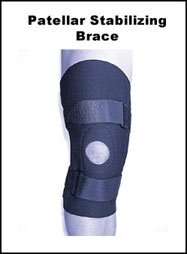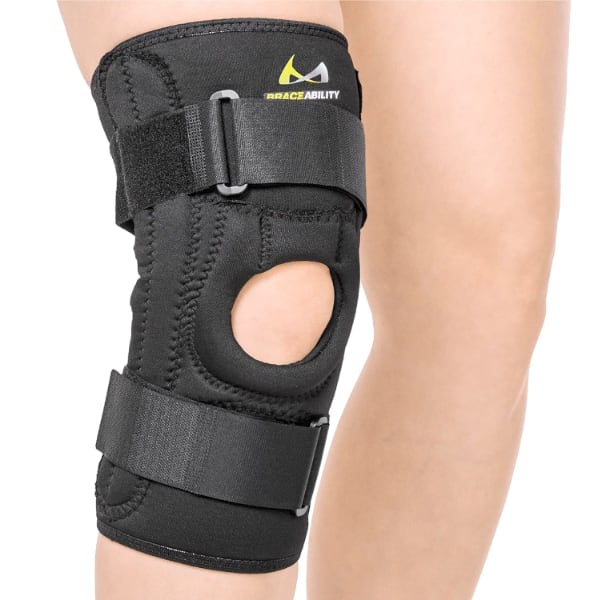In order to better understand the way patellofemoral braces work it is important to understand the anatomy and function of the knee and the knee cap (patella). Please review the sections on knee anatomy and patellofemoral pain prior to reviewing this section. You should also review the more specific section on the basic anatomy of the patellofemoral joint.

Patellofemoral pain describes the location of the pain but not its cause. Overuse (“too much, too soon”) or previous injuries to the knee are common causes of patellofemoral pain. Biomechanical factors such as poor tracking of the patella in the femoral groove, flat (pronated) feet, weak inner thigh muscles and tight outer thigh muscles and/or ligaments can also cause patellofemoral pain. Sometimes “wear and tear arthritis” (osteoarthritis) or damage to the articular cartilage (chondromalacia) on the back of the patella causes the pain but in most cases of patellofemoral pain the knee joint is normal.
The treatment of patellofemoral pain depends on it’s cause and may include stretching and strengthening exercises, relative rest, icing, medication, foot orthotics and bracing with a patellofemoral brace. In rare cases surgery is required.
What are the different types of patellofemoral syndrome braces?
There are many different types of patellofemoral braces available. They are usually made of neoprene and many have straps or pads (buttresses) that help keep the patella in place. The buttress can be adjusted but it is usually placed laterally to push the patella inwards (medially). Patellofemoral braces come in a variety of sizes with or without hinges for additional support. The effectiveness of a patellofemoral brace depends on the correct fit and use.
What are the disadvantages of braces for patellofemoral pain?
Patellofemoral braces have some drawbacks. Some people report that they are hot, cumbersome and sometimes the brace material can irritate the skin. Patellofemoral braces can also be expensive. Furthermore, patellofemoral braces do not always work. Sometimes they do not improve patellofemoral pain. However, when patellofemoral braces are fitted properly and when used in conjunction with a general knee rehabilitation program these braces can serve a role in the treatment of patellofemoral pain.
How do I know if I need a brace for my patellofemoral pain?
In summary, patellofemoral braces should be considered in the treatment of patellofemoral pain. Doctors and physiotherapists who are skilled in treating patellofemoral pain can advise whether a brace would be helpful and how to get the correct brace.
Please visit the links section for additional information on patellofemoral braces. Links have been provided to other websites as well as online medical journals. Other knee injury topics can also be accessed.
A recommended Patellar Stabilizing Brace:

BraceAbility Patella Stabilizing Chondromalacia Knee Brace – Patellofemoral Pain Syndrome
- U-SHAPED PADDED BUTTRESS – Improve patellar tracking, support and stabilization of the inner and outer kneecap with this chondromalacia wrap. The buttress helps reduce strain on the cartilage beneath the kneecap.
- LIGHTWEIGHT, COMFORTABLE SUPPORT – Made of breathable neoprene alternative, which allows heat and moisture to escape, making this knee brace the best option for an active lifestyle. Use during physical activity, walking, running, exercising, cycling, and hiking!
- CONVENIENT, PULL-ON STYLE – Quick and easy to apply, this medial knee pain brace is pulled on like a sleeve, with adjustable compression straps which help prevent any sliding down of the patellar immobilizer sleeve while you are active.
- TREATS AND MANAGES PATELLA PAIN – Use for a variety of knee pain and conditions such as tendon tears, patella alta/baja, chondromalacia, knee bursitis, dislocation, floating kneecap, runner’s and jumper’s knee, subluxation, knock knees, bowed legs and more! .
